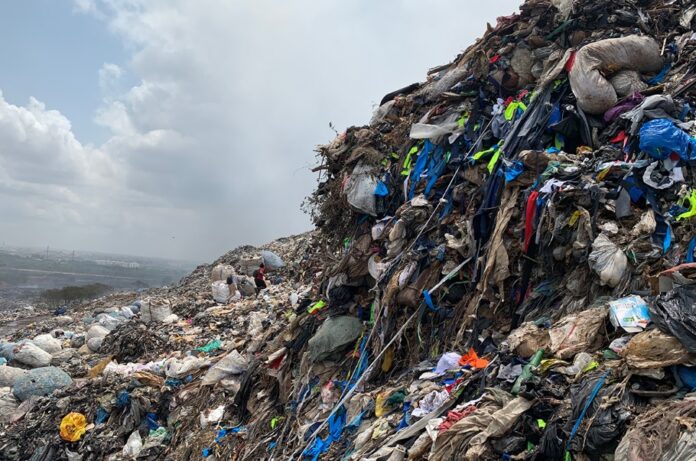
The textile industry is one of the world’s most important consumer goods industries. However, the textile industry has been accused of being one of the most polluting. Why? Because both the consumption of textile, as well as their production, generates waste.
Textile waste, like all waste, is generated in the community through various channels, including fibers, textile or clothing manufacturing industries, consumers, and commercial and service industries. The majority of textile waste is generated in the home. The average lifespan of any clothing is estimated to be three years, after which it is discarded as old clothing. Even ‘not so worn garments’ are sometimes discarded as they become unfashionable or undesirable.
To address the issue, the textile industry has implemented numerous measures to reduce its negative environmental impact. Textile recycling, or the reuse and reproduction of fibers from textile waste, is one such measure. Recycling is the process of converting waste materials into new or reusable products. It is worth noting that 99% of used textiles are recyclable.
Recycling can be achieved through thermal, material, chemical, and mechanical processes.
- Thermal recycling aims to recover heat energy from fiber waste incineration as thermal or electrical energy.
- Material recycling recovers polymers from fibers, and converting polyethylene terephthalate (PET) into fibers is the most cost-effective and widely used method.
- Polymer decomposition is used in chemical recycling to recover monomers from waste fibers. Impurities in recovered monomers can be easily removed, so their quality will be comparable to virgin monomers.
Benefits of textile recycling
Textile recycling can provide a second life to old clothes, linens, and other textiles. It benefits the environment and the economy by lowering the demand for textile chemicals, reducing the need for landfill space, consuming less energy, and wasting less water. It avoids many polluting and energy-intensive processes used to produce raw textiles.
- Textile recycling saves landfill space because synthetic fiber products do not decompose. Woolen garments decompose but emit methane, which contributes to global warming.
- Textile recycling reduces the demand for virgin resources: Recycled clothing does not necessitate the purchase of new textile resources such as cotton or wool.
- Textile recycling promotes the development of new markets: Raw materials derived from recycled content are generally less expensive, making their use appealing and desirable to manufacturers. As a result, there are more markets for reclaimed fibers.
- Textile recycling conserves energy and reduces pollution: Recycling conserves energy during processing. Reclaimed fibers, unlike raw wool, do not need to be thoroughly washed with large amounts of water.
- Recycling clothing and textiles reduces the demand for dyes and fixing agents, reducing the problems caused by their use and manufacture.
Barriers in recycling
- Lack of equipment: It is more of a problem for medium-sized businesses than small or large businesses. Recycling frequently results in too short fibers to be spun into yarn. Blends such as polyester and cotton, or cotton and lycra, present difficulties in recycling.
- Lack of consumer awareness: People’s attitudes toward waste issues are complicated due to a lack of awareness. However, the recovery of post-consumer textile waste is dependent on public donations. An educated public can help increase the use of recycled materials in products and the recovery of materials for recycling.
- Cost of the end product: In many cases, processing textile waste into usable form is labor intensive. To ensure quality output from the recycler’s operation, extensive sorting of materials must occur at the front end of the recycling process. Recycled fibers struggle to compete in many markets where the price of virgin fiber is so low.
- Lack of marketing: The lack of a market was ranked the most significant barrier to entering the marketplace. The explanation could be that companies can only produce so many wiping cloths, mop heads, or trunk liners before the market becomes saturated.
Conclusion
Only 15% of used clothing and textiles are recycled at the moment. The remaining 85% ends up in landfills, and most people are unaware they can recycle unused textiles to help reduce the negative environmental impact. It is time to raise consumer awareness and encourage manufacturers to use recycled textile waste in new products.
















![Warehouse robotics companies in Europe transforming order fulfillment [Updated]](https://roboticsbiz.com/wp-content/uploads/2019/12/warehouse-robots1-218x150.jpg)





